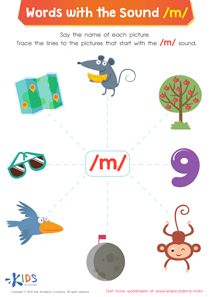Normal Consonant Blends Worksheets for Ages 7-8
6 filtered results
-
From - To
Enhance your child's reading and spelling skills with our Normal Consonant Blends Worksheets for Ages 7-8. Designed by educational experts, these worksheets focus on common consonant blends to build a strong phonics foundation. Interactive exercises help children recognize and pronounce blends like 'bl,' 'cr,' and 'st,' improving their ability to decode and construct words. Ideal for classroom use or additional practice at home, these worksheets are perfect for fostering confidence and proficiency in young readers. Engage your 7-8-year-olds in fun, educational activities with our comprehensive and easy-to-follow consonant blends worksheets.


Find The Missing Word Worksheet


Blending Consonants: "Fl", "Bl" and "Gl" Printable


Let's Look for Blends Worksheet


L Blends: "Pl", "Cl" and "Sl" Printable


Consonant Blends: "Dr" and "Tr" Printable


Review the Blends Worksheet
Parents and teachers should care about normal consonant blends for children ages 7-8 because these blends are foundational to literacy development. Consonant blends, combinations of two or three consonants that are pronounced together while each preserve its own sound, are key building blocks of language. Mastering these blends, such as "st," "bl," or "str," aids children in decoding words more effectively, which in turn enhances reading fluency and comprehension.
At ages 7-8, children are transitioning from basic word recognition to more sophisticated reading and writing. Familiarity with consonant blends increases their ability to tackle new and more complex words, expanding their vocabulary and boosting their confidence. This competency is not just crucial for academic success; it forms the underpinnings of effective communication skills required in everyday life.
Moreover, knowledge of consonant blends also promotes accurate spelling and better writing skills. When children recognize patterns in blends, they are less likely to make spelling mistakes and more likely to spell intuitively. This synergistic effect of improved reading, spelling, and vocabulary fosters an overarching appreciation and enthusiasm for learning. For these reasons, supporting children in mastering consonant blends positions them for lifelong literacy and learning success.

 Assign to My Students
Assign to My Students













